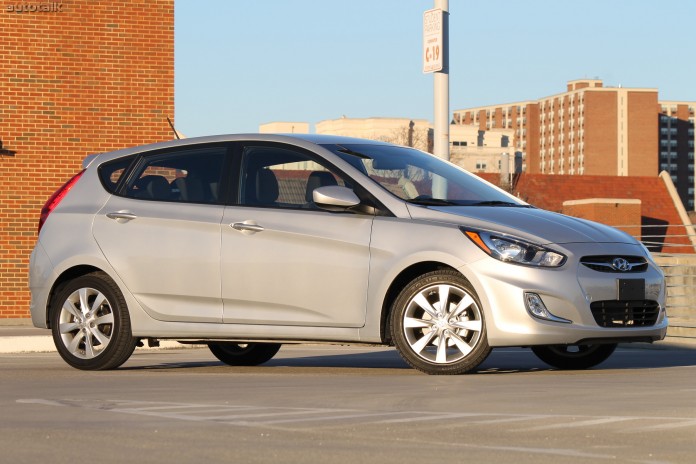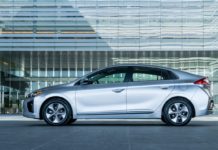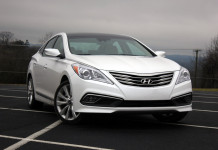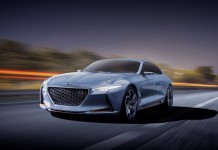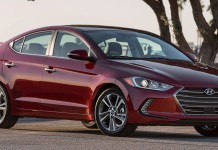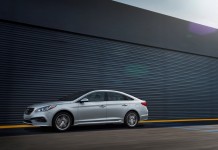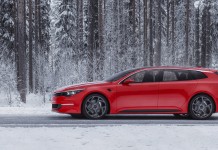Here’s some food for thought: the American public is beginning to transition away from large sedans to smaller vehicles. Proof can be seen in the sales as the small car segment is up while the large car segment is down. Because of this, a generation change for many subcompacts was recently seen and the entry-level market is now as strong as ever. With so many offerings, a potential buyer could easily find themselves with a headache after trying to decide and could still end up with a disappointment. In all honesty, among the dozens of subcompacts available, there really are just a select few that are worth a look. One of those is without a doubt the 2012 Hyundai Accent.
Completely redesigned for the 2012 model year, the Accent is one of first of many models to hold Hyundai’s Fluidic Sculpture Design. The Korean brand put a lot of effort into their gateway vehicle and did so in order to change some previously held thoughts. The goal was to bring a bit of upscale style and class to a segment that is more often compared to cheap than quality. With such award-winning cars as the Genesis and Equus now in their line up, Hyundai simply couldn’t forget their roots and revamped the Accent accordingly. The front face features the brand’s signature, hexagonal grille, teardrop headlamps and wide-mouth fog lamps. With deep cuts along the profile, there is an appearance of constant motion that surrounds the car: a goal successfully achieved. A short rear overhang not only gives the Accent a “rally car” like stance, but it helps with interior volume as well. Overall, the new redesign has done the car well as it doesn’t look so small that it would get laughed at but isn’t so big that no one would believe it’s cheaper than an Elantra.
During the summer of 2011, we managed to get our hands on a loaded Accent SE Five Door with the six speed manual transmission. We shuffled through the gears and barked the tires with confidence on the hot city streets of Charleston, South Carolina but this time around, our tester was fitted with one less pedal. To see just how different a car can be with a torque converter, we got behind the wheel of a SE Five Door with the six speed automatic. Carrying a base MSRP of $16,795, our Ironman Silver test car came equipped with a plethora of standard features from four wheel disk brakes, tire pressure monitoring, air conditioning, XM satellite radio, auxiliary inputs, bluetooth phone pairing, keyless entry, power windows, fog lamps and 16 inch wheels. The only added option to our Accent was a $95 set of floor mats and the $35 iPod cable: two of just a few available accessories. The only thing separating this tester from the one we sampled in South Carolina is the $1,000 automatic.



In all honesty, a bit of apprehension was felt when getting behind the wheel of the auto. The manual transmission equipped Accent was nothing but a hoot: exactly what a small car should be. It was quick, spry, loved being hurtled toward redline and each time a shift was needed, the light weight clutch and quick action shifter made us feel like absolute heroes. In most cases, when that third pedal is taken out of the picture, the story is never the same. Fortunately, Hyundai didn’t just throw in a decade old automatic left over from an older generation but instead, created a whole new piece. Coded the A6GF1, the slush box is a good-old-fashioned automatic with six actual gears and a lock-up torque converter. In the Accent, there is no dual clutch or CVT belts to be worried about and there’s no “ground-breaking” technology for buyers to test and then promptly break. When placed in drive, it does what a transmission is supposed to do: work. Take off, upshifts and downshifts are relatively smooth with the only feel coming from hard, high rpm gear change ups. In order to get the most out of the DOHC 1.6 liter Gamma engine, the automatic is fitted with an Active Eco mode which shifts early in order for engine speeds can stay low and thus, use less fuel. When around town, it did a fantastic job of returning 35 mpg but did have a tendency to up shift a little too prematurely. This feature can be turned off but the only time that happened was when true mountain carving hustle was needed. During our time spent with the Accent, we did just that by visiting a section of U.S. highway that holds 318 turns in 11 miles otherwise known as the Tail of The Dragon.
With traction control and Active Eco turned off and the shifter placed in manual shift mode, our tester began its assault on one of the most demanding roads in the nation. A tidy 101.2 inch wheelbase and road hugging 66.9 inch width are a definite recipe for solid small car dynamics and the Accent doesn’t disappoint. The steering wheel is assisted by a traditional power rack, not an distant-feeling electric unit like the Veloster’s and this is a good thing. It has a light feel at lower speeds, builds weight as the pace climbs and tells a driver when things are about to go over the limit. For the most part, the Accent’s handling characteristics are very neutral as understeer only truly shows itself when pushed too far. Lifting from the throttle during mid corner returns fine rotation so that hurtling around a corner while staying in the proper lane can be done quickly and safely. The brakes felt powerful and responsive but did fall victim to slight fade after a few heated runs through the mountain. Despite having a rear torsion beam suspension, the Accent stayed flat and grabbing an apex was done so with ease. By no means rocket ship fast, the little Hyundai does the absolute best with what it was given and is so eager to please that there was never an instance where the car seemed unhappy blasting wide open around a hairpin.
Once out of the mountain with traction control and Active Eco back on, there was a sight feeling of “what if?” As smooth as the automatic is, a small car really isn’t a small car without a clutch pedal. It may make driving “easier”, but the slushbox did have a habit of upshifting too soon for comfort, especially in manual mode. More times than not, third gear showed itself when we wanted second to stay around and there were times when flicking the shifter didn’t result in a downshift. At the end of the day, this transmission was not intended to hold high rpms but to return remarkable fuel economy. Despite managing to achieve a witnessed 35 mpg in the city, 42 on the highway and 28 mpg on the Dragon, the 1.6 liter engine never felt thrifty. Featuring gasoline direct injection, variable valve timing, an offset crankshaft and variable induction, the all-new Gamma is an excellent showing of true engineering. With 138 horsepower and 123 lb-ft of torque, the inline four cylinder sings a throaty little song but never sounded overworked. After all, it only has 2,496 lbs to haul around which means its weight-to-power ratio of 17.6 trumps all of its competition. Straight line speed is fast for its segment and solid for the real world: 60 mph can be had from a standstill in the low eight second range. Dynamic wise, the Accent is everything a small car should be as the limits of adhesion can be reached safely and easily.
As most stories go, an ending is never reached without a few hiccups along the way. They may contribute to handling and look handsome, but the larger 16 inch wheels come at a price: ride quality. Passengers mentioned that the road could be felt too much for comfort and at times, imperfections caused the car to judder. By no means bouncy, the suspension simply felt hard and thene there is the continuation of the grip we held in South Carolina. The steering wheel doesn’t telescope making it difficult for long armed drivers to find the perfect position. This feature could easily be added and why it is absent is a mystery to us. Even still, there were no complaints about the interior’s feel or aesthetics. One observer who is the owner of previous generation Accent was impressed enough to openly say, “WHOAH!” The material used inside no longer belongs solely in a rental car as everything feels well made. There’s a sense of durability that goes along with the added level of class: perfect for a car that will more than likely be owned by 20 somethings. Well placed dials and buttons make driving that much easier and the gauges look like they belong in a car costing thousands more. The stereo, though easy to operate, doesn’t quite put out the sound that should accompany the excellent looking insides. An optional premium stereo package with subwoofer could be an easy way for Hyundai to turn an extra profit.



Hyundai has made gargantuan strides in the past few years to finally become a legitimate player in the automotive industry. Not only are they churning out cars such as the tire shredding Genesis R-Spec and luxury-filled Equus, but they haven’t forgotten where they came from. It may be their lowest priced and smallest offering, but the Accent wasn’t just given a new face but a whole new personality. Unlike a lot of 2012 vehicles, both cheap and extravagant, the Hyundai’s character manages to show through. This is without a doubt, one of the happiest little cars on the market today. It’s so eager to please that a driver feels connected and when the perfect line through a corner’s apex is had, a sense of accomplishment washes over. The Accent may seem slow on paper to an all-numbers sports car fan but at the end of the day, none of that matters as long as you, the driver, has fun. Accompany that fun is efficiency, durability, comfort, utility and peace of mind. No other subcompact offering can match the Accent’s standard warranty which continues to be an industry best 10 years or 100,000 miles. Like most cars, there is room for improvement but not too much. Despite the smooth operation and high fuel economy return of the six speed automatic, the car feels better in manual transmission guise. Any way you slice it however, there is no denying that the 2012 Hyundai Accent is a good car and will continue to be for years to come.

